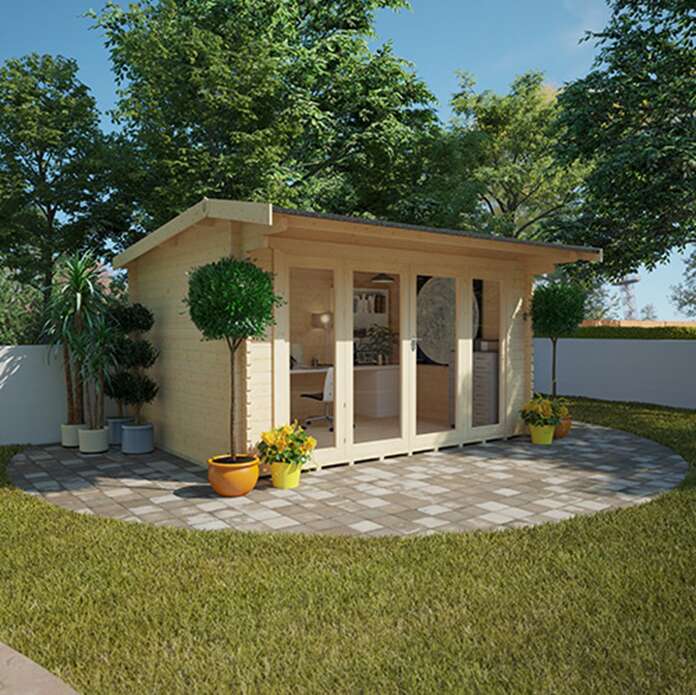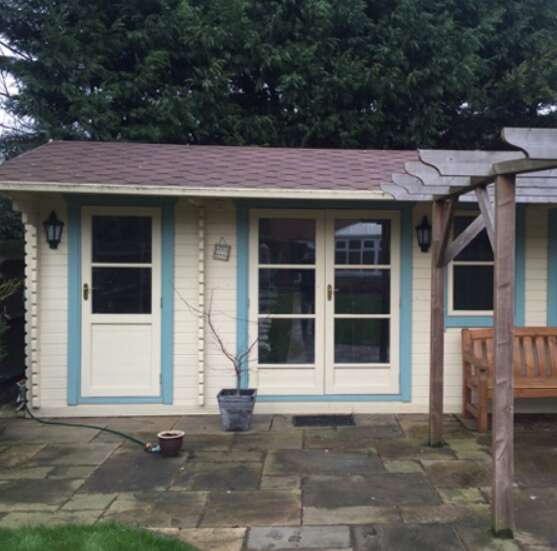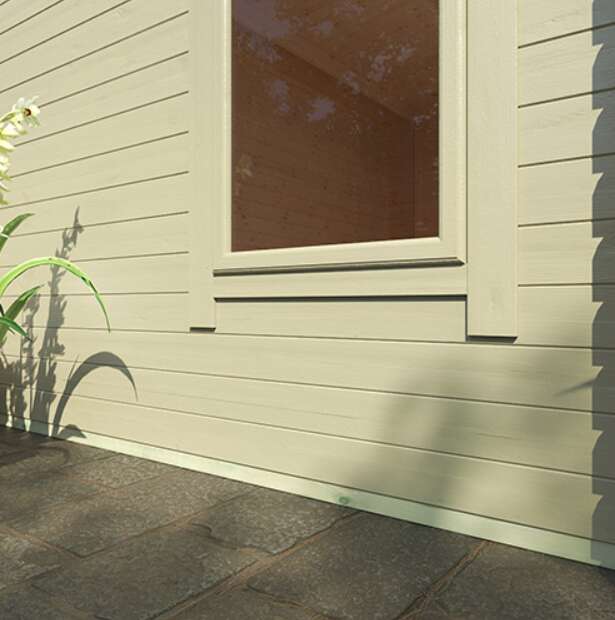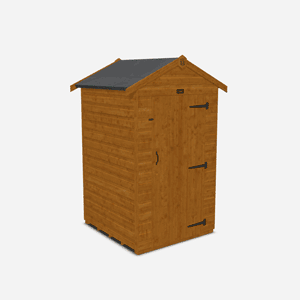How to Insulate a Log Cabin
Published: 04/01/2023

Log cabins certainly aren’t just for the summer, they can be used all year round, whether you’re hard at work in there or entertaining family and friends.
Log cabin insulation isn’t just about keeping you warm. An effectively insulated cabin will also help with the following:
Noise Pollution: Effective log cabin insulation is just as good at keeping unwanted noise out as it is the cold. If your log cabin doubles up as your home office or studio, proper insulation will significantly reduce noise pollution as well as keep you comfortably warm – both important factors in maintaining concentration and productivity.
Security: The thicker your log cabin walls, the warmer you’ll stay and the safer you’ll be too; a more substantial structure is much harder to vandalise or break into. The same goes for your doors and windows as well – the better the seal, the harder it’ll be to prize open.
Energy Efficiency: If you’re interested in insulating a log cabin, chances are you plan to spend a fair amount of time inside it. Whether you’re creating a home office, your own gym, or simply somewhere special to entertain, you’ll almost certainly need power. The more effective your log cabin insulation is, the more efficient your energy usage and the cheaper your energy bills will be.
Value: Insulating your log cabin opens up a world of possibilities and can help turn a project into a profession whilst adding character and value to your garden. You could opt for a garden gym or home office, sure, but what about a beauty salon or a recording studio? Whatever your log cabin becomes, effective insulation will help keep it warm in winter and cool in the summer, so you can work and/or play all year round.

Source: https://www.tigersheds.com/product/the-optima-44mm-log-cabin/
Log Cabin Insulation Guide
Properly insulating a log cabin is about ensuring that every part of the structure contributes to the overall insulation. Any compromise or shortcuts will drastically reduce the efficiency of your insulation and can even lead to serious problems further down the line. So, let’s look at how to effectively insulate every element of your cabin.
Insulating a Log Cabin Floor
Whether you’re building and insulating a log cabin from scratch or upgrading an existing one, effectively insulating your log cabin floor can knock an impressive 20 per cent off your cabin heating bill.
If you’re buying a new log cabin, you can also consider laying your floor frame on some damp-proof membrane and then insert foil backed insulation boards beneath the floorboards and between the joists to prevent any moisture or cold air from penetrating the cabin floor. Check out this high-performance bubble foil insulation for use in multiple applications.
If you’re insulating an old log cabin floor, the first thing to do is fill any gaps with high quality sealant. Once cured, a breathable membrane and batons must be installed underneath any other flooring layer. This stops water rising up but allows water vapour to escape, avoiding any issues with damp and rot.
Carpet can make your log cabin more comfortable underfoot but under no circumstance should you lay carpet directly on top of an uninsulated log cabin floor. Without insulation and a membrane, moisture will become trapped between the wood and the carpet, with both layers quickly developing mould as a result.
Accessories such as rugs are always a good idea for rolling out when you’re using your cabin so it’s cosier and warmer. Or you can consider Warm Floor tiles that insulate against heat loss and are even impact and tear resistant. A great idea if you’re using your log cabin as a children’s playhouse or studio.

The Thurber | 44mm Log Cabin | Tiger Sheds
Insulating Log Cabin Walls
The thickness of the timber used in your log cabin walls is a great place to start, as the thicker the wall, the more energy efficient it will be.
Log cabins are made of interlocking logs which join to create a solid structure with no visible gaps. A tight fit between logs results in a building that is more resistant to damp and wind penetration, extending the life of the cabin.
If you plan to use your building all year-round, it’s a good idea to choose a log cabin with thicker logs – especially if you live in a colder climate like the UK. Log cabins are available in a variety of thicknesses; we have buildings manufactured from 19mm, 28mm and 44mm logs. We’d recommend 44mm thick logs for an effective, natural level of insulation.

Not to scale
Insulating the frame before your timber is even erected can be beneficial too, as the frame provides the ideal space for more insulation boards or foil-backed polystyrene panels. You can do this by using a quality 3 in 1 insulation foil or board that provides protection from cold, heat, UV light and helps prevent penetrating damp and condensation. It is suitable for use in a wide range of applications around the home and garden and is quick and easy to apply.
15 per cent of a log cabin’s heat is lost through windows, so it’s important that they are properly fitted and insulated. If you’re opting for thicker walls for your log cabin (44mm and up), double-glazing is the obvious choice.
However, if your walls are going to be thinner or you’re renovating an existing garden building, fill any gaps around the windows with sealant and, if your windows are Perspex or particularly thin, try cutting another layer of Perspex out and fixing it to your windows to create affordable, DIY double glazing!
The same goes for cabin doors too: the thicker the timber, the better it’ll insulate. Make sure doors are hung correctly so they close properly and consider adding a draft excluder and some curtains to keep things extra cosy.
Insulating a Log Cabin Roof
We all know that heat rises, so it’s no surprise that log cabins can lose up to 70 per cent of their heat through the roof.
The key difference with roofing is that the insulation is more effective on the outside of your log cabin, so it prevents heat from escaping without taking up headspace or ruining the aesthetic of your timber.
Whatever roof style you opt for, a quality roof lining is vital to ensure not just efficient insulation but effective weather-proofing too, as any water or pest that finds its way into your log cabin can cause significant problems.

https://www.tigersheds.com/product/the-clara-44mm-log-cabin/
When choosing your log cabin roof, you could opt for stylish shingles which are perfect for the unpredictable British weather. This type of roof adds another layer of insulation as they are fitted on top of the roofing felt and has many benefits:
- Ensures the roof is more durable against the weather
- Reduces heat loss
- Requires less maintenance
- If correctly installed and maintained, shingles can have a life span of 25+ years!

Delta Log Cabins | 44mm Log Cabin | Tiger Sheds
Power Up
Whatever you’ve got planned for your log cabin, you’re probably going to need power. There are a couple of options – solar power or electricity. It’s worth bearing in mind that you can’t just add solar panels to any roof… you first need to make sure the roof is strong enough to hold the weight of the solar panels.
What you need to do is think about what you want and where you want it and then do your research.
If you think adding electric to you garden building is right for you get in touch with a qualified electrician who can take you through the process. See our in-depth blog on powering garden buildings for more advice.
Log Cabin Wall Insulation Problems
Here are a few easy-to-miss mistakes when assembling and insulating a log cabin that can quickly become a real headache…
Foundation: The bigger and heavier your log cabin, the stronger and more solid your base needs to be. A poorly laid base will not be level or strong enough to hold your log cabin and will make assembly very difficult, compromise the efficiency of your insulation and, in extreme cases, render your log cabin structurally unsound.
Not only is the material of the base important, but its placement is also too. It's best to choose an area in your garden that's as flat as possible. If you have no choice but to place it on a slope, take a look at our post on how to build a shed base on uneven ground.
Now that you know where is best build your shed base, the next thing to consider is how to build your base. There are different methods which all result in a suitably durable base, so the choice of material is yours. It is important to build your base slightly larger than the exterior dimensions of your building - approximately 30-40mm each side. Check out our Build a Base guide for more important information.

Procas Log Cabin | 44mm Garden Log Cabins | Tiger Sheds
Holes: Just like a standard shed, any gaps, cracks or holes will let wind, rain and wildlife into your log cabin. No matter how small, be sure to seal any holes to keep your cabin warm, dry and free of unwanted visitors.
Finish: Whether the timber of your log cabin is supplied treated or untreated, it must be painted with a specialist wood preservative at least annually. This will keep your cabin weatherproof and looking great all year round, so you can enjoy the comfort of your insulated log cabin for years to come.

Panthera Log Cabin | Quality Garden Log Cabins | Tiger Sheds

Mushroom Exterior Paint | Tiger Sheds









